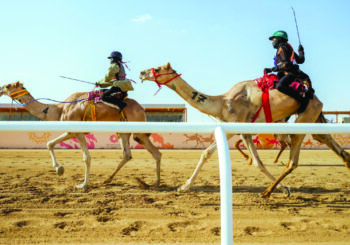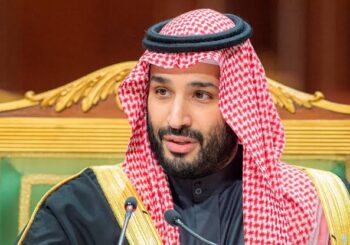Camel beauty contests, particularly the renowned King Abdulaziz Camel Festival, are a part of Saudi Arabian culture that showcases the beauty of these animals.
The King Abdulaziz Camel Festival, which began in 2000, has played a crucial role in shaping the modern format of these contests. With the integration of advanced technology and stricter regulations against cosmetic enhancements, the contests have adapted to contemporary cultural attitudes while still honoring traditional values.
The Festivals and Their Significance
The King Abdulaziz Camel Festival, also known as Mazayen al-Ibl (Camel beauty contest), is one of the most prominent events in the camel beauty contest calendar.
The 2024-2025 edition, which was scheduled from 1 December, 2024, to 10 January, 2025, featured a combination of beauty judging and racing, with a prize pool of up to USD 66 million (SAR 247 million).
In addition to the King Abdulaziz Camel Festival, the Custodian of the Two Holy Mosques Camel Festival was held in January and February of 2025, featuring 225 races and involving around 7,300 camels from over ten countries, with prizes exceeding SAR 70 million (USD 18 million).
Camels as Symbols of Bedouin Heritage
For centuries, camels have been referred to as the “ships of the desert,” playing a vital role in transportation, trade, food, and survival in harsh desert conditions.
To celebrate the beauty of camels is to honor the traditions of nomadic tribes and their deep bond with these animals according to the Saudi Press Agency.
Owning a well-bred, beautiful camel is often seen as a sign of wealth and lineage.
Camel contests also bring together tribes and families, reinforcing social bonds and reflecting regional traditions.
These competitions encourage the breeding of pure and healthy camel bloodlines, such as Majaheem –dark skinned camels known for long ears and graceful features or Waddah, white coated skinned camels, ensuring that these animals remain integral to Saudi culture rather than risk replacement by modern modes of transport.
Events like the King Abdulaziz Camel Festival culturally showcase that align with Saudi Vision 2030 as they promote heritage tourism and facilitate global cultural exchange, reinforcing the country’s commitment to highlighting its rich traditions.
Grooming Rituals and Beauty Standards
Grooming rituals for camels in these contests are elaborate and meticulous.
Breeders invest significant time and effort into preparing their camels, focusing on attributes such as long, droopy lips, prominent noses, and well-shaped humps.
The beauty standards are demanding, with judges assessing the camels based on their physical appearance and gracefulness during parades to showcase each camel’s beauty. The beauty criteria are rooted in long-standing traditions and emphasize specific traits valued in camel breeding.
However, the competitions have faced scrutiny by the organizers due to reports of cosmetic enhancements.
In recent years, authorities have cracked down on practices such as Botox injections and other artificial modifications to camels. Over 40 camels were disqualified for using such enhancements in the latest contests back in 2021.
The Camel Club, which organizes some events (yet does not oversee all camel racing or beauty contests), has committed to maintaining the integrity of the competitions by imposing strict penalties, such as fines and disqualifications, on competitors manipulating their camels’ appearances.
Nonetheless,the events draw participants from around the world, with thousands of camel owners and tourists attending.
The festivals serve as a platform to showcase the deep connection between camels and the people of Saudi Arabia, emphasizing their role in the region’s history and economy.








Comments (0)